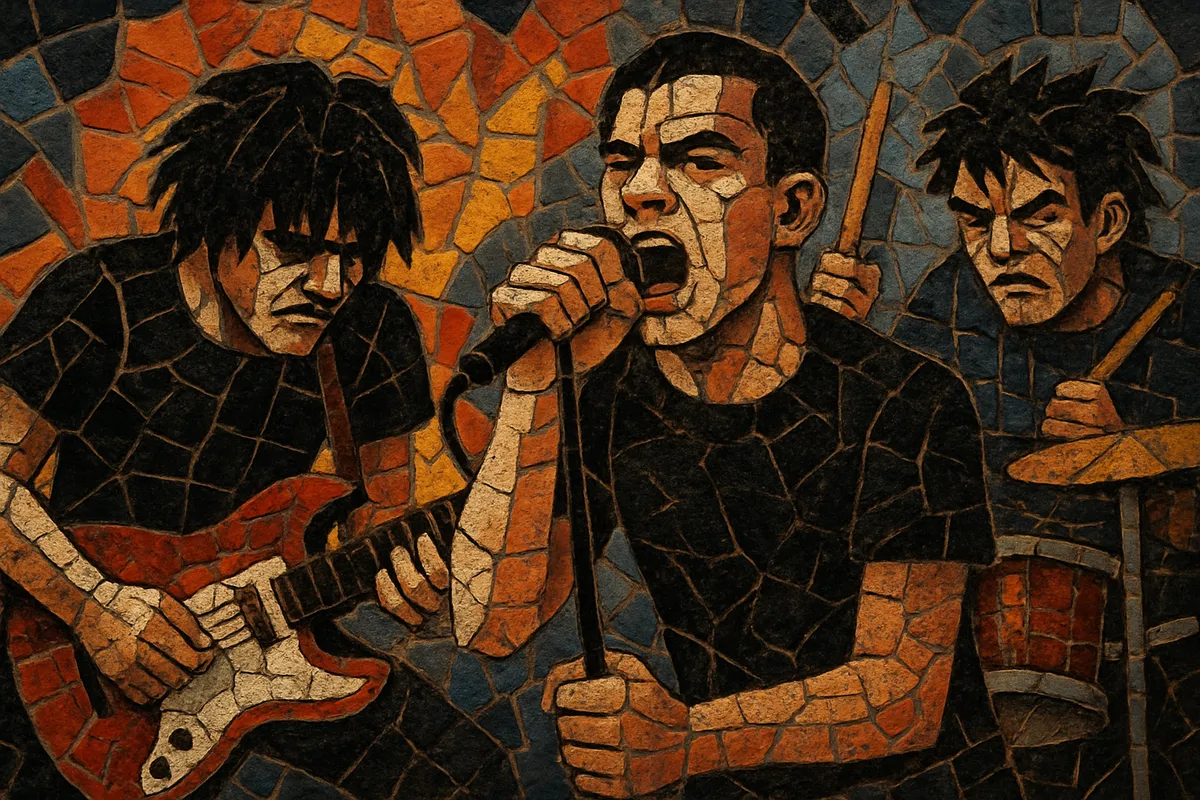
Garage punk is a raw, high-energy strain of rock that fuses the primitive drive of mid‑1960s American garage bands with the speed, sneer, and DIY ethos later associated with punk.
It favors overdriven guitars (often drenched in fuzz and spring reverb), stomping backbeats, shouted or snotty vocals, and two- or three-chord riffs recorded with intentionally lo‑fi, live-in-the-room immediacy. Organ stabs, handclaps, and tambourines are common textural touches, while lyrics lean toward teenage frustration, lust, menace, and mischief.
Songs are short, hooky, and explosive—more about attitude and impact than polish—making garage punk a perennial engine for underground rock scenes.
The roots of garage punk lie in the United States during the mid‑1960s, when countless teen bands played raw, loud rock in basements and local halls. While the term “punk” wasn’t yet in use, the wildest garage records—typified by bands like The Sonics—exhibited a ferocity, fuzz-scorched tone, and sneer that presaged punk’s ethos. Compilations such as Nuggets (1972) and later Pebbles and Back From the Grave retroactively canonized this sound as the most feral corner of garage rock, helping cement the label “garage punk” for its most aggressive strains.
As first-wave punk exploded, musicians dug back into 1960s obscurities. Groups such as The Cramps spliced garage’s primitivism with punk’s speed and attitude, catalyzing a revival. Independent labels and fanzines nurtured small scenes across the U.S. and Europe, celebrating crude recording techniques, thrift-store instruments, and a back-to-basics approach.
The 1990s saw a flourishing of garage punk via labels like Crypt Records, Estrus, In the Red, and Norton Records. Bands such as The Gories, The Mummies, Oblivians, and New Bomb Turks leaned into blown-out sonics, 4‑track recording, and relentless touring, establishing a durable underground circuit in Detroit, Memphis, the Pacific Northwest, and beyond.
A new wave pushed garage punk into broader indie consciousness. Acts like Thee Oh Sees (Osees), Jay Reatard, and Black Lips carried the flag with frenetic live shows and a prolific DIY output. International scenes (e.g., Sweden’s The Hives; Japan’s Teen Generate; Spain’s Doctor Explosion) highlighted the style’s portability: any city with a rehearsal room and a cheap PA could spawn a scene.
Garage punk remains a cornerstone of underground rock. While digital distribution widened reach, many artists still favor analog grit, live tracking, and minimal overdubs. Its spirit survives as a renewable resource for bands seeking immediacy, danger, and fun—no permission required.
Use a simple, loud setup: one or two electric guitars (with fuzz, overdrive, spring reverb), electric bass, and a punchy drum kit. A cheap combo organ (Farfisa/Vox) or harmonica can add authentic color. Hand percussion (tambourine, claps) helps drive choruses.
Center songs around two or three power‑chord shapes (e.g., I–IV–V or I–bVII–IV). Riffs are blues‑leaning and pentatonic, often in E or A for open‑string grunt. Structures are tight—intro, verse, big shout-along chorus, maybe a short, noisy solo, then out. Keep songs under three minutes.
Aim for 130–180 BPM with a relentless 4/4 backbeat on 2 and 4. Play straight eighths, minimal syncopation, and un-fancy but hard-hitting fills. Occasional Bo Diddley or jungle beat variations can add momentum without losing simplicity.
Project a sneer or shout; double-track for thickness and add slapback or plate reverb. Lyrics should be vivid and direct: teenage kicks, trouble, cars, parties, lust, local legends, or campy horror. Keep lines punchy and chantable.
Record live in one room, bleed and all. Push preamps into gentle saturation; embrace tape hiss and clipped drum mics. Mono or narrow stereo is fine. Prioritize feel over precision—one or two takes with mistakes that add character. Above all, deliver urgency and swagger.

